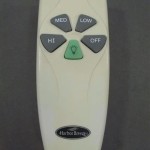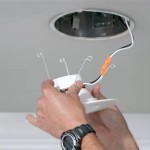Essential Aspects of Typical Ceiling Light Wattage
Ceiling lights are a crucial element in any living space, providing essential illumination and influencing the overall ambiance. Understanding the typical wattage of ceiling lights is key to creating a well-lit and harmonious environment. This article explores the essential aspects of ceiling light wattage, shedding light on its significance and providing practical guidelines for selecting the right wattage for your space.
Determining the Necessary Wattage
The wattage of a ceiling light refers to the amount of electrical power it consumes. Higher wattage indicates greater brightness, while lower wattage results in dimmer illumination. Determining the appropriate wattage for a room depends on several factors, including:
- Room Size: Larger rooms require higher wattage lights to provide adequate illumination.
- Ceiling Height: Higher ceilings necessitate higher wattage to effectively distribute light throughout the space. li>Purpose of the Room: Rooms used for specific tasks, such as reading or cooking, require brighter lighting.
- Natural Light: Rooms with ample natural light may require lower wattage lights.
Wattage Guidelines
As a general guideline, the following wattages are recommended for different room types:
- Living Room: 10-20 watts per square meter
- Kitchen: 15-25 watts per square meter
- Bedroom: 10-15 watts per square meter
- Bathroom: 15-20 watts per square meter
- Hallway: 10-15 watts per square meter
Energy Efficiency
Modern LED ceiling lights offer significant energy savings compared to traditional incandescent bulbs. By choosing energy-efficient LED lights, you can reduce your electricity consumption and save on energy costs while maintaining the desired brightness level.
Ambiance and Style
In addition to brightness, the wattage of ceiling lights can also affect the ambiance and style of a room. Dimmable lights allow for greater control over lighting conditions, creating a more versatile and inviting atmosphere. Additionally, the design and finish of the ceiling light can complement the overall decor and add a touch of visual interest.
Conclusion
Understanding the typical wattage of ceiling lights empowers you to make informed decisions about the illumination of your living spaces. By considering factors such as room size, ceiling height, and purpose, you can select the appropriate wattage to achieve the desired brightness level. Remember to prioritize energy efficiency and consider the style of the ceiling light to create a well-lit and visually appealing environment.

Which Light Bulb Wattage Do I Need Explained

The Ultimate Guide To Perfect Ceiling Light Lighting Lights
Dining Room Chandelier Ideas Light Fixtures

Led High Bay Guide What You Need To Know

The Most Common Light Bulb Questions A Faq Guide

Don T Be Fool While Selecting Best Led Lights In

Brightness Lumens

Types Of Led Lights The Home Depot

Light Bulb Brightness The Home Depot

How To Choose The Right Wattage For Ceiling Spot Lights Rayven
Related Posts








